Hypertension by Nick Youngson CC BY-SA 3.0 Pix4free
- High blood pressure is more common in adults, but it’s now becoming a problem in children too.
- It can happen because of health problems like kidney or heart issues, or from unhealthy habits.
- More children are getting high blood pressure because many are overweight and not active enough.
As parents, we often worry about our children's health and well-being, from ensuring they eat healthy foods to getting the best medical attention that we can afford whenever they are ill. But have you ever considered their blood pressure?
While hypertension is often seen as a condition that affects adults, it can also affect children and adolescents, and it is on the rise.
How common is hypertension in children?
Although it is more common in adults, hypertension in children is becoming recognized as a significant health issue.
It can result from underlying conditions, such as kidney disease or heart abnormalities, or develop as primary hypertension, often linked to obesity, poor diet, and lack of physical activity. Increased rates of childhood obesity have contributed to a rise in hypertension among children.
A review of studies on hypertension in Africa finds that about 7% of African children are hypertensive and that the number is rising due to an increase in the number of children who are overweight or obese.
Types of hypertension in children
Hypertension could be primary or secondary.
Primary hypertension, or essential hypertension, is a condition of high blood pressure in which the cause is unknown. Primary hypertension runs in families and is the most common type of hypertension in children.
Secondary hypertension is high blood pressure with a known cause, such as renal disease, heart disease, or endocrine disorders.
What are the causes of hypertension in children?
There are many genetic, environmental, lifestyle, and medical factors responsible for hypertension in children. They include:
- Having a hypertensive parent
- Obesity
- Poor diet
- Sedentary lifestyle
- Chronic medical conditions like diabetes, kidney disease, and sleep apnea
- Medications, including NSAIDs, steroids, and over-the-counter cold remedies
Signs and symptoms of hypertension in children?
Here are some signs that may suggest your child has hypertension:
- Headaches
- Fatigue
- Dizziness
- Blurry vision
- Chest pain
- Difficulty breathing
- Blood in urine
It is important to note that many children with hypertension do not experience any symptoms, so regular blood pressure checks are essential for early detection and treatment.
How can you know if your child has hypertension?
Diagnosing hypertension in children requires multiple blood pressure measurements taken over time and a thorough evaluation of your child’s medical history, family history, and physical exam.
The diagnostic criteria for hypertension in children use average blood pressure values for age, sex, and height. The doctor must measure a child’s blood pressure multiple times to establish a diagnosis of hypertension.
- High blood pressure is more common in adults, but it’s now becoming a problem in children too.
- It can happen because of health problems like kidney or heart issues, or from unhealthy habits.
- More children are getting high blood pressure because many are overweight and not active enough.
As parents, we often worry about our children's health and well-being, from ensuring they eat healthy foods to getting the best medical attention that we can afford whenever they are ill. But have you ever considered their blood pressure?
While hypertension is often seen as a condition that affects adults, it can also affect children and adolescents, and it is on the rise.
How common is hypertension in children?
Although it is more common in adults, hypertension in children is becoming recognized as a significant health issue.
It can result from underlying conditions, such as kidney disease or heart abnormalities, or develop as primary hypertension, often linked to obesity, poor diet, and lack of physical activity. Increased rates of childhood obesity have contributed to a rise in hypertension among children.
A review of studies on hypertension in Africa finds that about 7% of African children are hypertensive and that the number is rising due to an increase in the number of children who are overweight or obese.
Types of hypertension in children
Hypertension could be primary or secondary.
Primary hypertension, or essential hypertension, is a condition of high blood pressure in which the cause is unknown. Primary hypertension runs in families and is the most common type of hypertension in children.
Secondary hypertension is high blood pressure with a known cause, such as renal disease, heart disease, or endocrine disorders.
What are the causes of hypertension in children?
There are many genetic, environmental, lifestyle, and medical factors responsible for hypertension in children. They include:
- Having a hypertensive parent
- Obesity
- Poor diet
- Sedentary lifestyle
- Chronic medical conditions like diabetes, kidney disease, and sleep apnea
- Medications, including NSAIDs, steroids, and over-the-counter cold remedies
Signs and symptoms of hypertension in children?
Here are some signs that may suggest your child has hypertension:
- Headaches
- Fatigue
- Dizziness
- Blurry vision
- Chest pain
- Difficulty breathing
- Blood in urine
It is important to note that many children with hypertension do not experience any symptoms, so regular blood pressure checks are essential for early detection and treatment.
How can you know if your child has hypertension?
Diagnosing hypertension in children requires multiple blood pressure measurements taken over time and a thorough evaluation of your child’s medical history, family history, and physical exam.
The diagnostic criteria for hypertension in children use average blood pressure values for age, sex, and height. The doctor must measure a child’s blood pressure multiple times to establish a diagnosis of hypertension.






